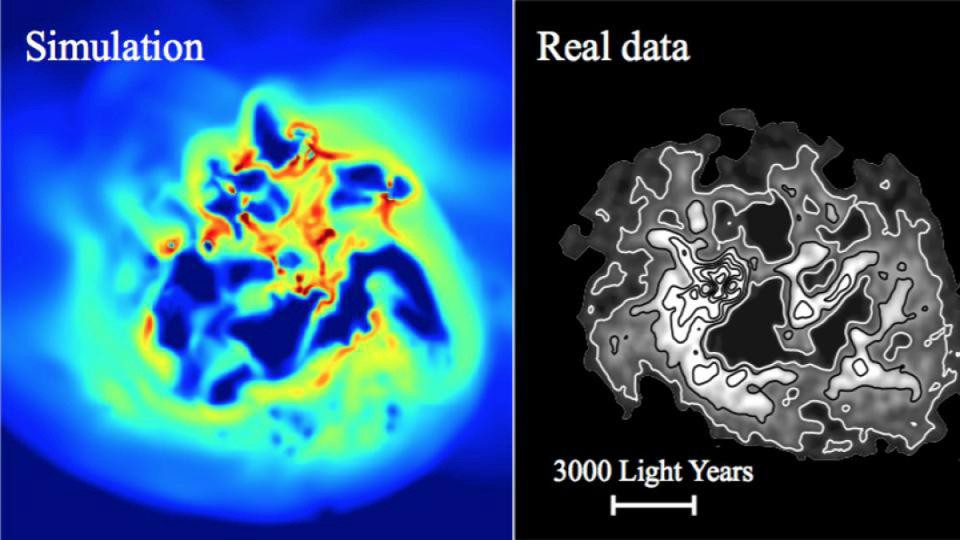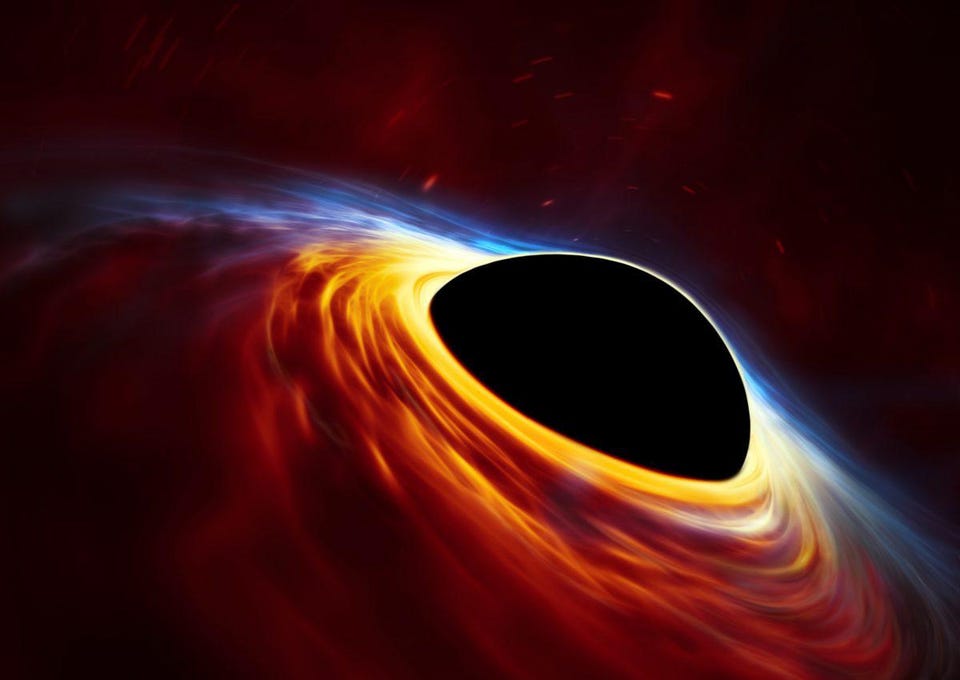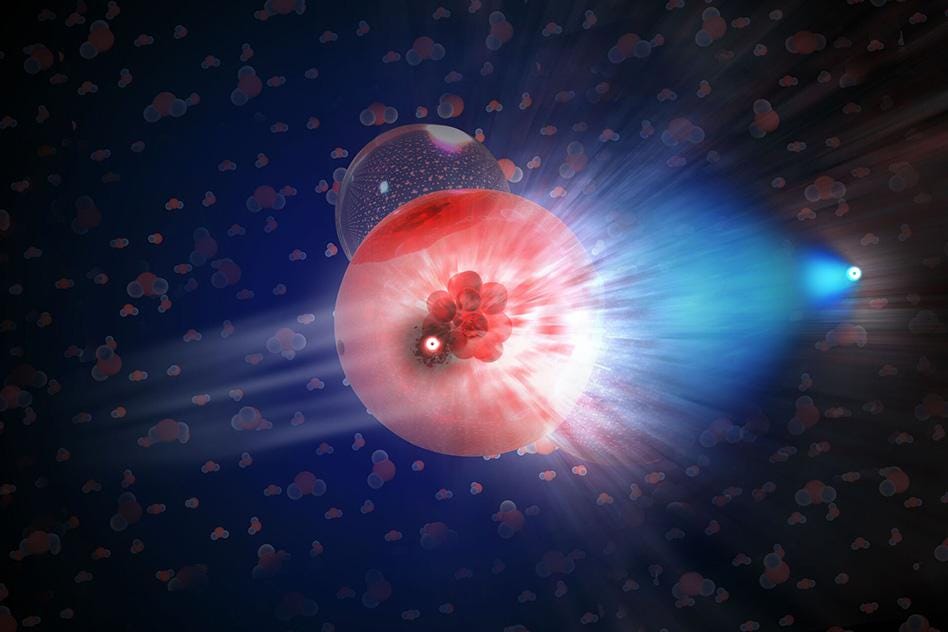5 truths about dark matter that no scientist can deny

- Despite all the stars, galaxies, gas, dust, and more that's present in the Universe, all of the atom-based "normal matter" only makes up 5% of the total energy of what's out there.
- The remainder is made of dark matter (27%) and dark energy (68%), with dark matter being responsible for everything from the large-scale structure of the Universe to how galaxies and galaxy clusters hold themselves together.
- Many have often wondered if you could simply modify our theory of gravity to do away with dark matter entirely, but the answer is no: not if you want to explain these five key pieces of evidence all at once.
Every so often, advocates of a fringe theory — one that doesn’t fit the evidence as well as the mainstream theory — do what they can to breathe life back into it. Sometimes new evidence comes to light, challenging the mainstream theory and causing alternatives to be re-evaluated. Sometimes, a surprising set of observations supports a once-discredited theory, bringing it back into prominence. And at other times, a false narrative is the culprit, as disingenuous arguments that have been rightfully dismissed by mainstream professionals takes hold among a new generation of inexperienced individuals.
Unless you yourself have the necessary expertise to diagnose what’s being presented accurately and fully, it’s virtually impossible to tell these scenarios apart. Recently, another physicist suggested, in text and in video, while following the lead of an incredibly controversial contrarian in the field, that the situation surrounding dark matter has changed, and that modified gravity now deserves equal consideration. Even more recently, another prominent physicist has stated a similarly dubious case for the non-existence of dark matter.
Unless you’re in the business of ignoring the majority of the cosmic evidence, however, that’s simply not the case. Here are five truths that, once you know them, can help you see through the false equivalencies presented by those who would sow undue doubt about one of cosmology’s biggest puzzles.

1.) The total amount of normal matter in the Universe is unambiguously known.
You might look out at the Universe — full of stars, galaxies, gas, dust, plasma, black holes, and more — and wonder if there isn’t more of the “known stuff” out there. After all, if there are additional gravitational effects over and above what we can account for, perhaps there’s just some unseen mass out there responsible for it. This idea, of “normal matter that’s just dark,” was one of the major ideas that stood in the way of dark matter becoming an accepted part of cosmology in the 20th century.
After all, there’s plenty of gas and plasma out there in the Universe, and you might imagine that if there’s enough of it, we wouldn’t need some fundamentally new type of matter at all. Perhaps if neutrinos were massive enough, they could take care of it. Or perhaps if the Universe were born with too much matter, and some of it collapsed to form black holes early on, that could solve the cosmic mismatch we see.
But none of those things are possible, as the total amount of normal matter in the Universe is unambiguously known: 4.9% of the critical density, with an uncertainty of just ±0.1% in that value.

The key observational restriction is the observed abundances of the light elements: hydrogen, deuterium, helium-3, helium-4, and lithium-7. Over the first ~4 minutes of the hot Big Bang, these light elements were forged in the early Universe’s nuclear fires. The amount of each element we get is highly dependent on how much total normal matter there was back in those early moments. Today, we measure these abundances directly, through spectroscopic measurements of gas clouds, but also indirectly: through detailed observations of the cosmic microwave background. Both types of measurements point toward the same picture: one where 4.9% ± 0.1% of the Universe’s energy is in the form of normal matter.
That’s too fast to form black holes, so those are out. Big Bang Nucleosynthesis depends on neutrinos, and three types — the electron, muon, and tau — are the only ones allowed, and they can’t be the dark matter either. Nothing in the Standard Model, in fact, will do the job. But this key fact cannot be rightly disputed: given the amount of normal matter we’ve determined that we have, a new type of fundamental ingredient must exist to be consistent with our cosmological observations. We call this ingredient “dark matter,” and it must exist.

2.) You cannot explain either the cosmic microwave background or the large-scale structure of the Universe without dark matter.
Imagine the Universe as it was back in the earliest stages: hot, dense, almost perfectly uniform, and expanding and cooling all the while. Some regions, born with slightly greater densities than others, will begin to preferentially attract matter to them, trying to gravitationally grow.
As gravitation gets to work, the density increases, causing the radiation pressure inside to increase also. This growth eventually causes the density to peak, which leads to photons flowing out of it, and the density then goes back down. As time goes onward, larger regions can start to grow via collapse, while the smaller regions collapse, then rarify, then collapse again, etc. This behavior will lead to temperature imperfections in the Big Bang’s leftover glow, and eventually will form the seeds of structure that grow into stars, galaxies, and the cosmic web.
But you’ll get a different set of behavior, in both the cosmic microwave background and the Universe’s large scale structure, dependent on whether you have both dark matter and normal matter, or just normal matter alone.

The reason is because the physics is different. Dark matter and normal matter both gravitate. They both lead to increases in radiation pressure, and that radiation flows out of an overdense region whether it’s made of normal matter, dark matter, or both. But normal matter both collides with other normal matter and interacts with photons, while dark matter is invisible to it all. As a result, a Universe with dark matter has twice the number of fluctuation peaks-and-valleys in both the cosmic microwave background’s spectrum and also the power spectrum of large-scale structure than a Universe with normal matter alone.
Definitively and unambiguously, dark matter is required. Specifically, that dark matter has to be cold, collisionless, and invisible to electromagnetic radiation: it cannot be normal matter. If you want to turn up the dial on your skepticism-meter, keep an eye out for contrarian papers that attempt to explain either the cosmic microwave background or the matter power spectrum without dark matter; chances are that they add something in — like a massive neutrino, a sterile neutrino, or an extra field with a specifically tuned coupling — that functions indistinguishably from dark matter.

3.) Dark matter behaves as a particle, and that’s fundamentally special compared to something that behaves as a field.
There’s another disingenuous narrative being peddled recently by those who wish to sow doubt about dark matter: that, because particles are just excitations of quantum fields, that adding a new quantum field (or modifying the gravitational field) can be equivalent to adding new (dark matter) particles. This is the worst kind of argument: one that has a technical kernel of truth to it, but that misleads about the core point of it all.
Here’s the core point: fields are general, and they permeate all of space. They can be homogeneous (the same everywhere) or clumpy; they can be isotropic (the same in all directions) or they can have a preferred direction. Particles, by contrast, can be massless, in which case they must behave like radiation, or they can be massive, in which case they must behave like traditional particles. If it’s the latter case, these particles:
- clump,
- gravitate,
- have the known, understood relationships between kinetic and potential energy,
- have meaningful particle properties like cross-sections, scattering amplitudes, and couplings,
- and behave according to (at least) the known laws of physics.

It is for these reasons — for all of the properties of dark matter that we’ve been able to infer from astrophysical observations alone — that we conclude that dark matter is particle-like in nature. That doesn’t mean it can’t be a pressureless fluid, a type of clumpy dust, or that its cross-section is zero under every interaction except the gravitational one. What it does mean is that, if you try to replace dark matter with a field, that field must behave in a fashion that, from an astrophysical perspective, is not distinguishable from the behavior of a large set of massive particles.
Dark matter doesn’t have to be a particle, but to say, “It can be a field just as easily as it can be a particle,” glosses over the big truth: that dark matter behaves in exactly the fashion that we’d expect a new population of cold, massive, non-scattering particles to behave. Particularly on large cosmic scales, i.e., the scales of galaxy clusters (about ~10–20 million light-years) and larger, this particle-like behavior can only be substituted for with a field that behaves indistinguishably from how particle dark matter would.

4.) Very real small-scale physics effects, like dynamical heating, star-formation and feedback, and nonlinear effects must be worked out.
The problems with dark matter — or rather, the cases where cold, collisionless dark matter makes predictions that conflict with observations — almost exclusively occur on small cosmic scales: scales of large individual galaxies and smaller. It’s true: certain modifications to gravity can better match the observations on these scales. But there’s a dirty secret here: there’s messy physics on these small scales that everyone agrees has not been properly accounted for. Until we can properly account for them, we don’t know whether to call modified gravity or dark matter approaches successes or failures.
This is hard work! When matter collapses into the center of a massive object, it:
- sheds angular momentum,
- heats up,
- can trigger star formation,
- which leads to ionizing radiation,
- which pushes the normal matter from the center outward,
- which gravitationally “heats up” the dark matter in the center,
and all of this needs to be calculated. Furthermore, we’ve only been considering the simplest dark matter scenario: purely cold and collisionless, with no external interactions or self-interactions. Sure, we could modify gravity in addition to adding cold, collisionless dark matter, or we could ask, “What interaction properties could dark matter have that would lead to the small-scale structure we observe?” These approaches are equally valid, but both require the existence of dark matter — whether you call it dark matter or not — and must reckon with these known, real effects.

5.) You must explain the full suite of cosmological evidence, or you’re cherry-picking, not doing legitimate science.
This is an enormous point that cannot be emphasized enough: we have all of this data about the Universe, and you must take all of it into account when you’re drawing your conclusions. This includes the following examples:
- you must look at all seven acoustic peaks in the cosmic microwave background, not just the first two,
- you must be honest about whether the “thing” you’re adding (instead of dark matter) is equivalent to and indistinguishable from dark matter,
- you must not modify your law of gravity in a way that explains small-scale features at the cost of not explaining large-scale features,
- you must not pick statistically unlikely outcomes that have clearly occurred (but are not forbidden) as “evidence” that the leading theory is wrong (see the low quadrupole/octupole in the CMB for years of wasted effort on this front),
- and you must not oversimplify and mischaracterize the successes of the leading theoretical idea your contrarian approach wishes to supplant.
Remember, in order to overthrow and supersede an old scientific idea, the first hurdle you have to clear is reproducing all of the successes of the old theory. We may indeed need a new law of gravity to explain our Universe, but you can’t do it in such a way that dark matter isn’t also required.

There are some very important points that you should never forget when it comes to the question of dark matter and modified gravity on both small and large scales. On large scales, gravitational effects are the only ones that matter, and represent the “cleanest” astrophysical laboratory for testing cosmological physics. On smaller scales, stars, gas, radiation, feedback, and other effects arising from the physics of normal matter plays an enormously important role, and simulations are still improving. We have not yet reached the point where we can do small-scale physics unambiguously, but the large-scale physics has been there for a long time, and decisively points the way to dark matter.
The easiest way to fool yourself is to do something that gives you the right answer without taking the full suite of what must be at play into account. Getting the right answer for the wrong reason — especially if you can check that the answer is right — is the most surefire way to convince yourself that you’re onto something big, even if the only thing you’ve captured is the effects of the important physics you’ve failed to consider. While we don’t know whether the law of gravity needs to be modified, we can be confident that, when it comes to the matter in our Universe, about 85% of it really is dark.





